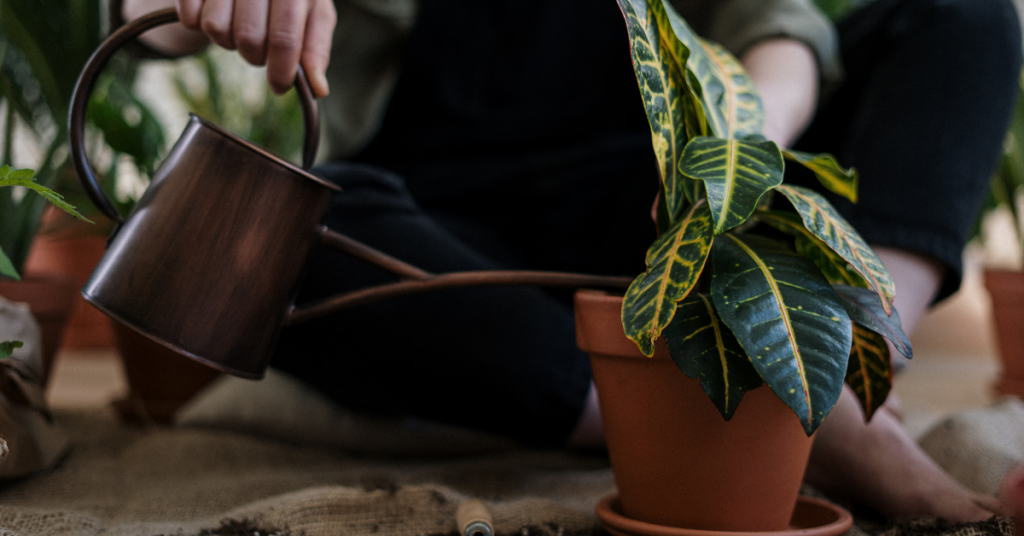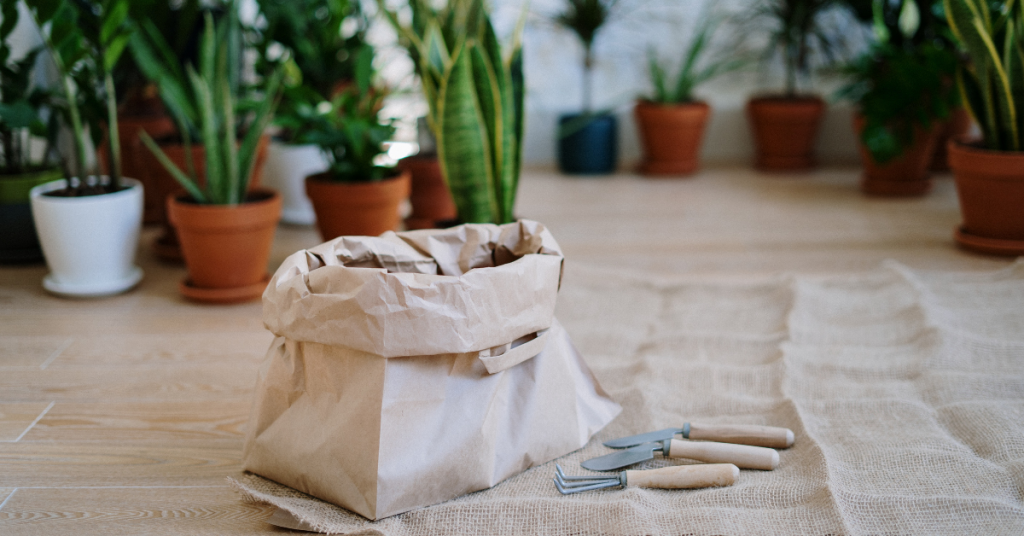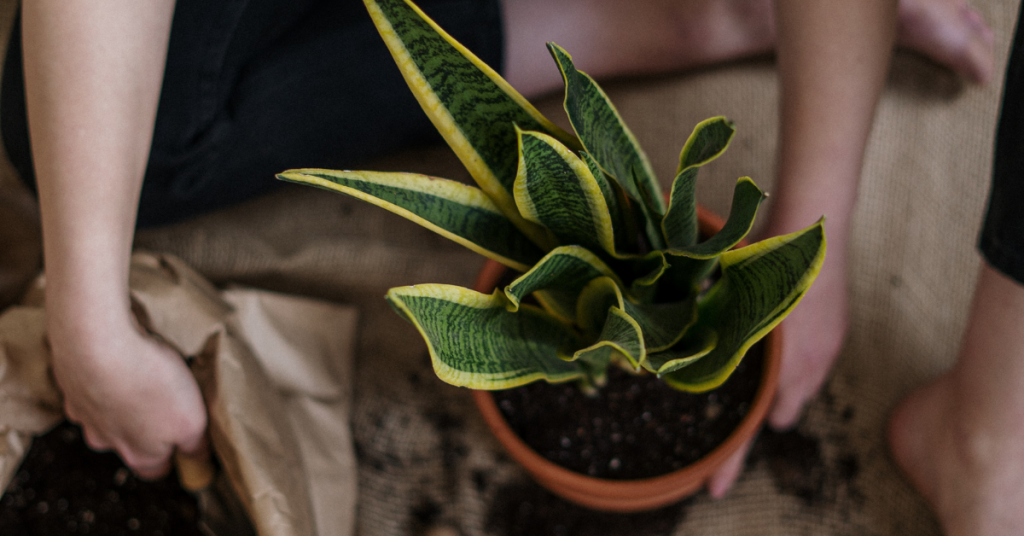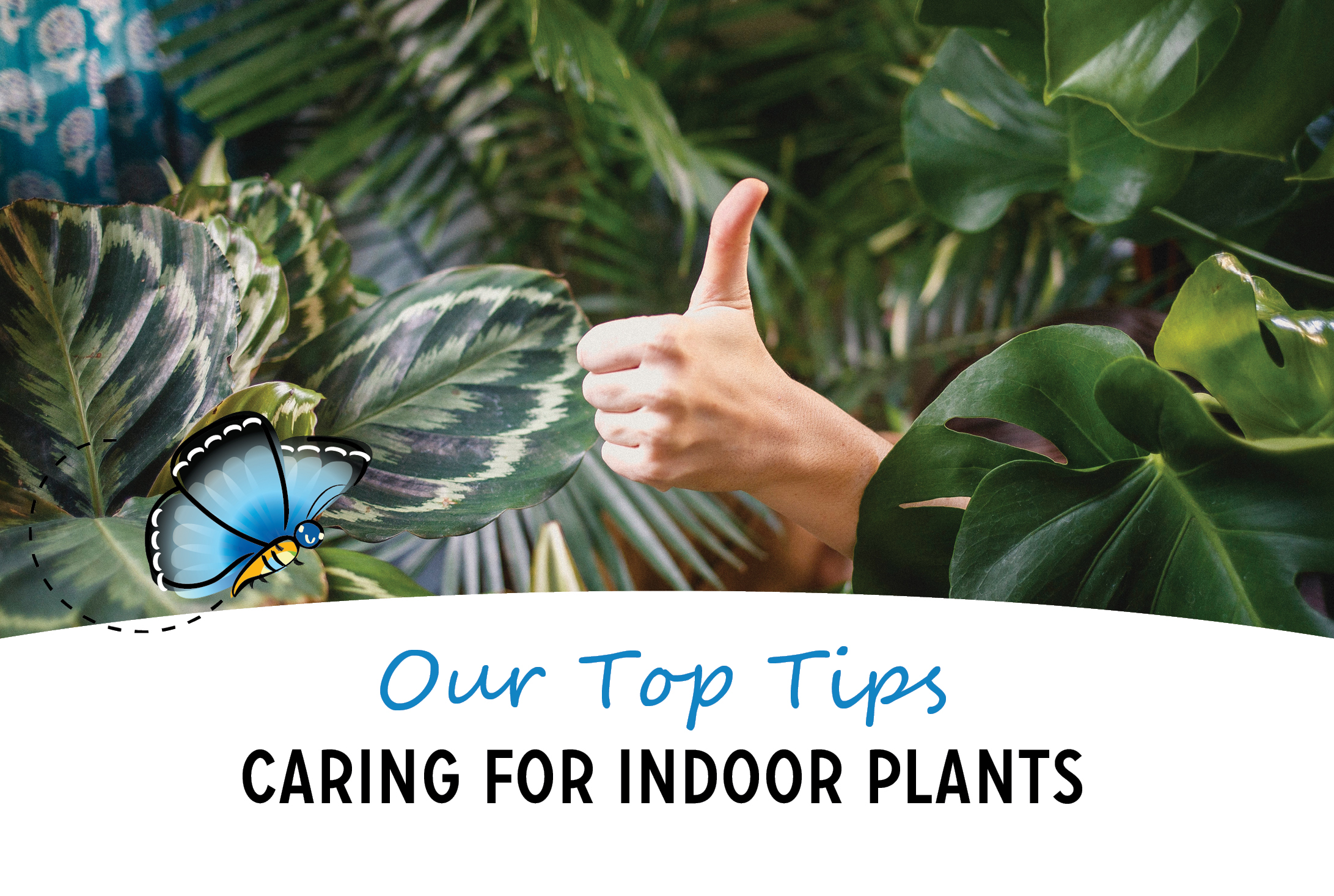Written by: Bylands Nursery Ltd
Indoor plants and succulents are so popular now, with gardeners and non-gardeners alike. People across the province are looking for ways to beautify their homes, bring a sense of calm into their indoor living spaces, purify their air, and provide a much-needed distraction during this pandemic… And indoor plants deliver on all of these!
As one of the main destinations for gardening and plants in the Okanagan Valley, we naturally get many questions on how to help indoor plants thrive! We have reviewed the most commonly asked care questions and put together these top tips for keeping your indoor plants healthy and happy!
Water your plants as needed, and best to do it in the morning

Watering your plants properly is so important as it provides structural support, cools your plant down, and moves minerals to all the right places.
However, it is particularly difficult to manage because there are so many variables that affect how much water – including the plant, pot size, humidity and light of the room. Also, surprisingly, sticking to an exact, precise watering schedule can actually do more harm than good! Most indoor plants prefer regular watering, but there are some exceptions.
So what are the rules of green thumb for watering?
- For most indoor plants, just water when the soil is dry. Use your fingers to determine the soil moisture levels and water if the soil is dry 2 inches deep (not just on the surface!). Consider investing in a moisture meter – these are very helpful with houseplants, especially the larger ones.
- How much to water? The easiest way to think about it is to pour water and let it soak in, drenching the soil so that the water drains all the way through the pot. If the pot doesn’t have drainage, be careful to not exceed ¼ of the pot’s volume of water.
- What time of day is best to water? People are often surprised to find out that the best time to water is in the morning. Watering in before the sun shines in full force allows the plant to absorb more water.
- Most indoor plants prefer warm water or tepid water over cold water, as it absorbs into the soil the best.
- Be mindful of the season! During the summer, when the sun is most intense you may need to water more. Generally, small succulents will need to be watered every two weeks (compared to once a month during the other seasons). Tropical plants like ferns which like a more moist environment may need to be watered once a week during the summer months, and less frequently in other months.
- In general, it is better to water less than more.
- Pick a pot with drainage (aka hole at the bottom) and put the pot on a tray – this will help minimize the risk of overwatering.
How do you know if you have watered too much or too little?
- Too little? The main sign is that your plant will look wilted!
- Too much? Some signs of overwatering are the yellow lower leaves, blackening of the base of the plant and of course, wet soil. Confusingly, a plant could also look wilted if overwatered, so make sure to look out for these other signs.
Fertilization is key – it is a plant’s multivitamin supplement!

Additional nutrients from fertilizer are critical for the vitality of your plant. Think about it as a vitamin and mineral boost for your plant! Here are our general rule of green thumbs:
- Select a fertilizer suitable for your plant and follow the instructions on the fertilizer package.
- Plan for the seasons – keep in mind that you need to fertilize less in the winter months compared to the summer months. Fertilizing monthly in warm months is sufficient, and every two months in the colder months.
- Adjust for other variables – recently potted plants and low-light plants will require less fertilizer!
- Again, less is more! Too much fertilizer can do more harm than good, so err on the side of caution when using.
- Skip the fertilizer if you have just repotted your plant using fresh soil – the new soil will have enough nutrients it does not need a boost!
Try to replicate the plants natural environment as much as you can

Plants are generally happy if you can try to replicate their natural environment, which is different for different houseplants. Ferns typically prefer higher humidity, indirect light and warm temperatures. Cactus and succulents are from the desert and prefer direct light, warm temperatures and more dry conditions. Here are some things to consider:
- Air temperature – Aim to keep it consistent. Keep the temperature between 18 and 24 degrees C. Avoid placing your plants near drafty doorways or windows, heaters, air conditioning units, or radiators, which can create hot or cold drafts.
- Sunlight – Generally, the more sunlight the better. Some plants tolerate light away from windows, but as a rule, no plant should be farther away than 6 feet from a window. Another way to think about this is to try to create a plant’s natural environment. Succulents and cactus live in the desert, so they prefer to be in direct sunlight. Ferns come from the forest, so they need less light.
- Humidity – this one is a bit more difficult to control, but again try to stay true to your plant’s natural environment. A humidifier can help in the dry winter months. Consider misting tropicals and ferns for humidity. Succulents and cactus on the other hand prefer dry air and don’t need to be misted.
Keep in mind that stability is key. Extreme changes in any of the above can stress the plant.
All the best caring for your indoor plants, beautifying your home and cleaning your air in the process!
The Team at Bylands in West Kelowna, BC



